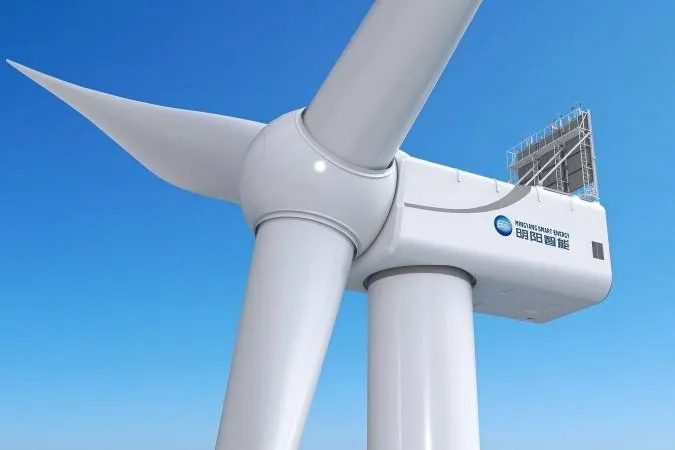Mingyang vs Siemens Gamesa? Documents suggest Green Volt scrap is on
Mingyang's 18.5MW model fits a revised planning application for key floating wind project, but a Siemens Gamesa platform could meet an alternative scenario just as well

Mingyang may be facing off against Siemens Gamesa as the supplier of turbines to Scotland’s Green Volt floating wind project, after planning documents showed a close fit to models the two manufacturers produce.
A request for amendments to a 2024 planning consent submitted by the Green Volt consortium set out two scenarios in terms of wind turbine sizes and ratings.
The first scenario described a configuration of up to 35 wind turbines with a capacity of 14MW and the option to “power boost” to 15MW.
This option offers a fit with the specifications of Siemens Gamesa’s SG 14-236 DD, which has a 14 MW nominal rating and a power boost to 15MW.
For the second scenario, Green Volt requested planning consent for an overall increase in turbine size, describing 30 machines rated at 18.5MW and a rotor diameter of 260 metres.
This offers a close match with Mingyang’s commercially available MySE 18-20X model.
The Chinese company's scaling up of its earlier 14MW platform and adaptation to North Sea conditions has so far focused on an 18.5MW model, which fits exactly with the Green Volt specification.
Mingyang is expected to launch bigger options targeting North Sea markets later this year.
Controversial choice
The 560MW Green Volt has attracted speculation about the possible selection of Mingyang wind turbines for some time, at a project that looks set to be the biggest floating wind farm in the world when it comes into operation.
Some reports have suggested that Green Volt has already targeted Mingyang as a preferred vendor in a market where margins are squeezed by costs and European OEMs are struggling to meet demand for bigger machines.
The developers behind Green Volt, Edinburgh-based Flotation Energy and Norway’s Vargronn, have continually stressed that no decision has yet been made about a turbine supplier.
The revised application followed this line, stating that a final decision on the wind turbine option will be made post-consent, "enabling flexibility to reflect market availability and project optimisation".
The original Section 36 planning consent, issued by the Scottish government last year, only covered machines rated up to 16MW, requiring the Green Volt consortium to request a variation to its terms.
The Green Volt partners stressed that the project’s total installed capacity will remain limited to 560MW in accordance with the earlier Section 36 Consent, whichever turbine option is chosen.
Variations in turbine dimensions requiring new consent, included hub height, rotor tip height and diametre and swept area, as well as changes in the spacing between each WTG.
The amendment request also includes changes to the dimension of the floating substructures and their mooring systems in larger turbine scenarios.
The documents made clear that the Green Volt partners are still looking at a range of options for floating foundations including semi-submersible platform, a semi-submersible barge and a tension leg platform.
In its revised application, the Green Volt consortium stated that proposed design envelope changes aimed "to optimise windfarm efficiency and enable utilisation of the best available technological solution for the site, considering results of site investigations and further development of engineering design".
"Having secured a Contract for Difference from the government last year, we are identifying supply chain partners to help us build the windfarm. As yet, no turbine supplier has been confirmed for Green Volt. We will comply with any Government regulation and guidance around security of critical national infrastructure in the selection of all our suppliers."
The statement added that the new documents submitted to Scotland's Marine Directorate would "facilitate an agile approach as soon as any decision has been taken.”
INTOG challenge
Green Volt was awarded its seabed lease in 2022 under the terms of Crown Estate Scotland's Innovation and Targeted Oil & Gas. (INTOG) offshore wind tender, which was partly aimed at decarbonising oil and gas installations in the North Sea.
In its planning documents, Green Volt said the project will enable oil and gas platforms in the Outer Moray Firth to be electrified with renewable energy.
However the Green Volt consortium has described ongoing discussions with "various other Outer Moray Firth platforms."
The Green Volt project will also provide renewable energy to the Scottish mainland.